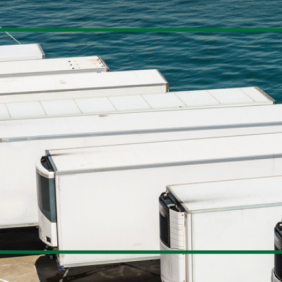Whether you are shipping an appliance to another state or regularly ship commercial freight, errors happen. At some point in your shipping experience, you may find yourself dealing with freight damage or loss. While it is not a pleasant thing to handle, you can minimize the frustration of shipment damage. Regardless of the reasons, whether it’s frequent handling, weather, or anything else, there are ways to keep your freight protected. How to Deal With Freight Damage Inspect the shipment It is the first and
Even if your shipping strategy is perfect, and you are using a good shipping provider, sometimes freight damage is difficult to avoid. There are different reasons why your load may suffer damage upon arrival, like multiple handling, inconvenient packaging, extreme weather, etc. Of course, this might not happen to you, but when at a certain point you find out about your freight shipment being damaged, it is better to be fully prepared. This includes knowing how to file a freight claim. To start off, getting
Winter is known to be a harvesting season, and springtime traditionally marks the start of the fresh produce shipping season. Most fruit and vegetable farmers and importers start to look for the capacity to distribute their products across the country when the demand for fresh produce greatly increases. Grocery stores, supermarkets, and restaurants need seasonal fruit and veggies to sustain their businesses.
When is produce shipping season?
-
Produce season usually starts in April and lasts till the end
Planning temperature-controlled shipments can be extremely complicated because the slightest disruption could lead to spoiled products and lost sales. Reefers, or refrigerated trucks, handle 90% of all food distributed through the U.S. Aside from meat, dairy, and fresh produce, frozen equipment is also used to carry medicine, flowers, electronics, fine art, cosmetics, and other products that require climate control during transportation. To keep your cold shipments efficient and profitable, you can use seve
The role of high-performing and high-level shipping services is growing. Retailers and small businesses have to keep up with the increasing competition, and at the same time provide quality products and services to their customers. Essentially, breaking the bank to keep all the processes running is difficult, and businesses are looking for ways to save costs. One of the possible solutions to cut unnecessary costs is to look into your inbound freight shipping strategy.
Why is inbound shipment management im
Textile and clothing industries are two big branches of the economy, which fuel a significant number of retail businesses. From zippers and sewing materials to high-end fashion products, the textile and fashion industry is crucial for today’s society. Apparel supply chains are complex and usually time-sensitive. Because of the high customer expectations in this field of retail, shipping and textile logistics play critical roles in customer experience, and, consequently, greatly affect the company’s profit.
There are two main over-the-road shipping modes: truckload and less-than-truckload. However, if you have ever shipped slightly beyond the LTL limits or not enough for full truckload, you may have assumed it’s not very cost-efficient. There is another option you may not be aware of, and that's partial truckload shipping. For some shippers, it can be a cheaper and more useful alternative to traditional shipping modes.
What is partial truckload shipping?
-
Partial truckload shipping refers to a medium amoun
It has never been easier to sell and buy things online or ship items internationally. Whether you’re an individual entrepreneur or a small business, you can benefit from the rapid development of cross border e-commerce. Numerous marketplaces made it possible to access customers across the world. For example, shipping to Canada can be a great start for U.S. retailers or businesses. While it has become easier to expand your audiences and handle transactions from different countries, shipping freight internat
Black Friday is just around the corner, marking the official start of the holiday season for shoppers and retailers. Each year, the last Friday of November is getting bigger by generating more and more sales and revenues. In 2018, it generated $6.2 billion in online sales, which was almost 23% more than the previous year. This has resulted in a leap in demand for e-commerce companies and retailers. It can be very challenging to keep up with that demand and maintain high-quality customer service at the same
Freight shipping can be a simple and positive experience... when you know the fundamentals of the process. However, even experienced shippers sometimes make small errors that can cost them a budget, customers, or business relationships. When you state uncertain or inaccurate shipment information, you can be surprised by accessorial charges to your freight. Following some simple steps will reduce the likelihood of this experience and save you money.
What is an accessorial charge?
-
An accessorial charge i









